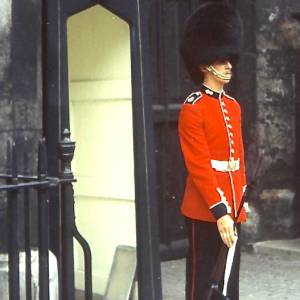Fittie
Todays lunch fresh air break from the office found me back at Foot O Dee!
Footdee is an area of Aberdeen, Scotland known locally as "Fittie". It is an old fishing village at the east end of the harbour. The name is actually folk-etymology. Far from being "Foot of the Dee/Fit o the Dee", it is actually a corruption of a former dedication to a "St Fothan"
The area has had a settlement as far back as the medieval times and the first recorded reference to the area of Fittie was in the year 1398. This village was slightly further North than where Footdee is now located. As in1808 the entire fishing village of Footdee (Fittie) was moved partly to accommodate harbour expansion and partly because the residents had requested it.
Footdee is a particularly interesting example of a planned housing development purpose-built to re-house Aberdeen's local fishing community. Laid out in 1809 by John Smith, then Superintendent Of The Town's Public Works. Smith went on to establish himself as one of Aberdeen's key architects. Occupying an isolated spit of land to the SE of Aberdeen's city centre, its regimented squares have been described as a cross between the neo-classical aspirations of Aberdeen and the close-knit fishing communities of the northeast.
The two squares of 'Fish Town' (known as Footdee), originally contained 28 single-storey thatched houses although this increased when the later Middle Row (circa 1837) and Pilot Square (circa 1855) were added. The entrances on each of the North and South squares were filled in the 1870s by William Smith (son of John and architect of Balmoral Castle). He also added additional storeys to the East and West sides of South Square creating a tenement feel. This was an attempt to ease crowding resulting from an influx of fishing families from other less prosperous areas and to help try to enforce the 'one-house-one-family' rule.
The Town Council decided to start selling the dwellings to occupiers in 1880, beginning a period of incremental development and reconstruction. Additional storeys and dormers were added piecemeal by the new owners as funds allowed. The result is one of individuality expressed within the constraints of a strictly formal plan and is a contributing factor to the special architectural and historical interest of Footdee as a whole.
Throughout the 19th century, 'tarry sheds' were added to the communal land within the squares opposite each dwelling and now every dwelling has its own shed. Originally constructed from drift wood and other found materials, the sheds have been built and rebuilt in an idiosyncratic manner over the years in a variety of materials with rendered brick now predominating slightly (2006). Some timber built sheds remain, predominantly on the North side of North Square.
The entire Footdee village was added to the statutory list in 1967 as a single entity. The village was subsequently given Conservation Area status in 1968.

Comments
Sign in or get an account to comment.


